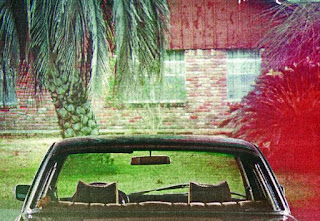'Into the Woods' Review
A delectable witch's brew
Film review by Isaac Handelman
Disney’s Into the Woods is just the sort of eclectic, devilishly clever film that’s tailor-made for a Christmas Day release. This adaptation of Stephen Sondheim’s beloved Broadway hit draws inspiration from a multitude of classic fairy-tale sources to craft a spectacularly entertaining final product greater than the sum of its disparate parts.
Weaving together the tales of Cinderella (Anna Kendrick), Little Red Riding Hood (Lila Crawford), Jack (Daniel Huttlestone) and the Beanstalk and more, Woods finds a focal point in the form of the unnamed Baker (James Corden) and his wife (Emily Blunt). The childless couple is approached by a delightfully deranged witch (Meryl Streep), who promises them fertility in exchange for the ingredients necessary to restore her youth. And so, the couple sets off into the woods to mount their search; luckily, several fairytale characters have also ventured forth, each bearing an ingredient of the witch’s brew.

Immediately engaging audiences are Into the Woods’ punchy musical numbers, which encompass a majority of the film’s dialogue. The songs flow together organically, which helps to meld the film’s many contrasting elements into a singular experience. There are a handful of standout tunes -- Johnny Depp’s delightfully creepy wolf strut “Hello, Little Girl,” the witch’s operatic final ballad “Last Midnight,” and the hysterical “Agony” belted out by a pair of melodramatic princes, among others -- but even the lesser tunes manage not to feel out of place. Director Rob Marshall’s sure-handedness in the medium of musicals is clear, as he gives each singer his or her due without ever having the film’s technical aspects impede upon the flow of the music.
The highly energetic performances of the ensemble cast lend themselves well to Woods’ musicality. Streep dials in a predictably stellar turn in what’s something of an unconventional role for the veteran actress. Though her character’s arc feels the least well-developed out of the main cast and comes to a rather confusing close, she’s a delightfully wacky, pseudo-malicious presence throughout.
Corden and Kendrick deliver strong performances and lend stronger pipes, and child performers Crawford and Huttlestone are both well-suited to their roles and showcase considerable musical talent; Crawford in particular imbues Red Riding Hood with a wonderful brand of lightning-in-a-bottle energy.
But the surprise standouts of the cast are Chris Pine and Emily Blunt, who play Cinderella’s prince and the Baker’s wife, respectively. Pine is outrageously funny, stealing every scene he’s in by managing to simultaneously play a believable, charismatic Charming while delivering a hilarious, tongue-in-cheek send-up to the character’s preposterousness. Blunt is more reserved but, at her best, no less amusing, effectively conveying the character’s genuinely desperate nature while showcasing a knack for comedy that she’s not before let loose.
As these characters sing and dance in and out of each other’s interwoven stories, they participate in a variety of quick-witted exchanges. The unrelenting cleverness of the film’s script means viewers are bound to miss bits and pieces of Woods’ creative lyricism and clever dialogue, thus ensuring repeated viewings will bring new instances of laughter.
 Woods’ comedic nature contrasts its dedication to telling the original, dark, versions of the fairytales it presents. Contrary to what the film’s distributor may have you believe, these aren’t the happily-ever-after Disney-fied variations on the Grimm tales. The film does a great job of juggling its lighthearted tone with the darker themes on-hand; though such a balancing act does lead to a few instances where characters don’t seem to react naturally to dire situations, the payoff is a handful of surprising, giddily twisted scenes that manage not to derail Woods’ family-friendly nature.
Woods’ comedic nature contrasts its dedication to telling the original, dark, versions of the fairytales it presents. Contrary to what the film’s distributor may have you believe, these aren’t the happily-ever-after Disney-fied variations on the Grimm tales. The film does a great job of juggling its lighthearted tone with the darker themes on-hand; though such a balancing act does lead to a few instances where characters don’t seem to react naturally to dire situations, the payoff is a handful of surprising, giddily twisted scenes that manage not to derail Woods’ family-friendly nature.
Less effective are Into the Woods’ attempts at moral messaging. These well-intentioned underlying themes are conveyed muddily in the context of what actually occurs in the film; put simply, Woods is not always content with playing by its own thematic rules. This inconsistency harms the film’s ultimate impact, and leaves its conclusion feeling wishy-washy.
Still, for the overwhelming of the majority of Into the Woods, you’ll be too swept away by the delightful tunes, memorable characters, and clever, comedic dialogue to care much for its thematic inconsistencies. It’s an experience made for the gaping halls of Broadway and translated expertly to the big screen. Do yourself a favor and take a trip into the theater for this one.





Comments
Post a Comment